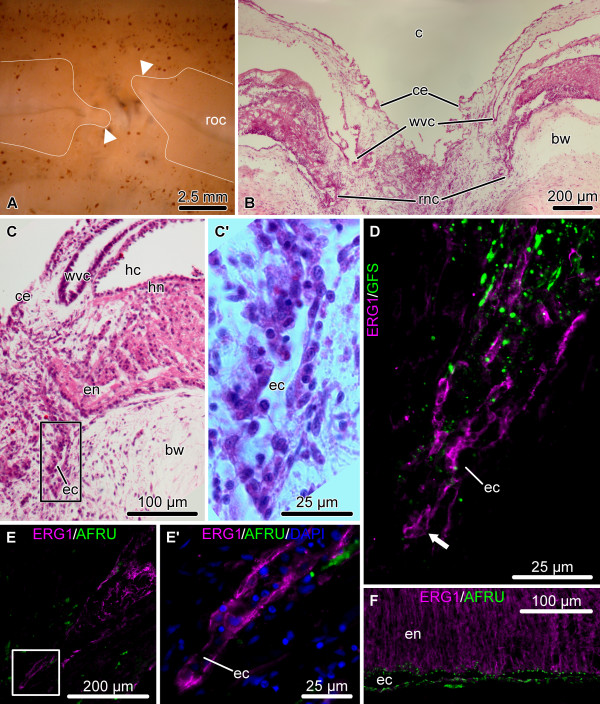Figure 5.
Organization of the regenerating RNC during the growth phase (days 8 – 12 post-injury). (A) Regenerating radial organ complex as viewed form the coelomic side of the body wall. The growing regenerates are labeled with arrowheads. Note that in this case the radial organs growing from the opposite sides of the wound are not aligned along the same axis. (B – F) Longitudinal sections through the regenerating RNC. (B) Low-magnification view of the regenerating radial organs; hematoxylin and eosin staining. (C) Detailed view of the growing tip of the RNC; hematoxylin and eosin staining. Note that the tip of the hyponeural cord grows slower than the ectoneural cord. (C’) shows higher magnification view of the boxed area in (C). (D) Growing ectoneural cord. Double labeling with the glial marker ERG1 (magenta) and the neuronal marker anti-GFSKLYFamide antiserum (green). Note that the leading tip (arrow) is made up of differentiated glial cells (magenta) and contains no neuronal elements (green). (E, E’, F) Double immunolabeling with the ERG1 (magenta) and anti-RS AFRU (green) antibodies. Note that the glial cells of the leading tip of the growing ectoneural cord do not produce RS-like material (E, E’), unlike the glial cells of the more proximal regions (F). (E’) shows a detailed view of the leading tip of the growing glial tube (boxed area in E). bw, connective tissue of the body wall; c, coelom; ce, coelimic epithelium; ec, epineural canal; en, ectoneural cord; hc, hyponeural canal; hn, hyponeural cord; rnc, radial nerve cord; roc, radial organ complex; wvc, water-vascular canal.

